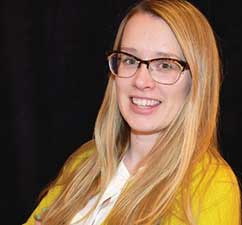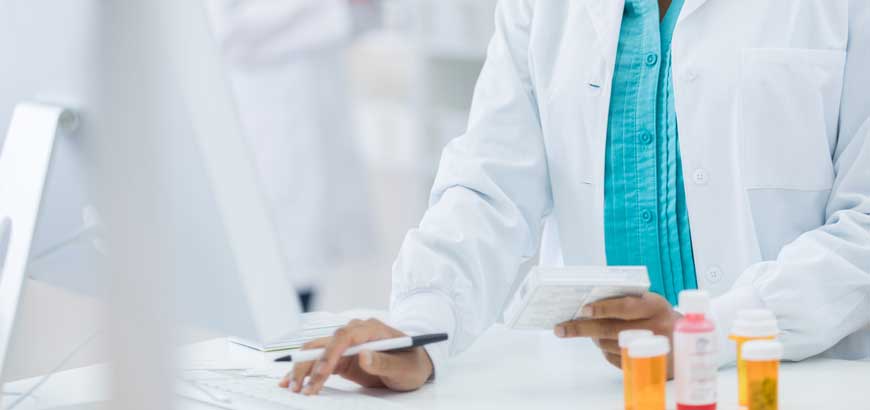Read time: 8 minutes
By: O'Mally Mohahan
 In this Q&A, our McKesson Health Systems (MHS) team sat down with O'Mally Monahan (OM), Regional Senior Vice President, Business Operations, US Oncology Network (USON) and former VP, RxO Operations, to discuss patient assistance programs (PAP) and, more specifically, how a comprehensive PAP can help to make a significant and positive impact on your health system's financial growth and viability.
In this Q&A, our McKesson Health Systems (MHS) team sat down with O'Mally Monahan (OM), Regional Senior Vice President, Business Operations, US Oncology Network (USON) and former VP, RxO Operations, to discuss patient assistance programs (PAP) and, more specifically, how a comprehensive PAP can help to make a significant and positive impact on your health system's financial growth and viability.
MHS: Can you walk us through the basics of how PAPs can benefit the health system pharmacy in general?
OM: PAPs, or patient assistance programs, are offered by pharmaceutical companies to help individuals who are uninsured or underinsured access the medication they need. These programs can provide significant benefit to the health system pharmacy in several different ways – the first being increased patient access. PAPs help patients who would otherwise face financial barriers to obtaining their medications. By eliminating or reducing the cost burden, PAPs ensure that patients can access their prescribed medications, improving medication adherence.
Improved patient outcomes is another benefit. When patients can afford their medications, they are more likely to take them as prescribed. This adherence to medication regimens can lead to better health outcomes, reduced hospitalizations, and improved overall patient well-being.
Improving affordability is next in mind. PAPs can help alleviate the financial burden on patients who may struggle to afford their medications due to limited insurance coverage, high copayments, or other financial constraints. This can improve patient satisfaction and increase medication adherence.
Bringing it back to the pharmacy, a lucrative PAP program can enhance a pharmacy's reputation. By actively participating in PAPs, health system pharmacies demonstrate a commitment to patient care and access to affordable medications. This can enhance the reputation of the pharmacy and contribute to patient loyalty.
And last but certainly not least, cost savings to the health system pharmacy. In some cases, PAPs may offer medications at no cost or at reduced prices. By leveraging these programs, health system pharmacies can potentially reduce their medication acquisition costs and improve their bottom line.
It's important to note that PAPs can vary in their eligibility criteria by manufacturer and even drug. The application process and medication coverage are also different. The leader of your PAP program should have a clear understanding of the specific PAPs available and work closely with patients and healthcare providers to navigate the application process and ensure optimal patient outcomes.
MHS: In your opinion, would you say some health system pharmacies may be leaving opportunities on the table in terms of offsetting expenses with their PAP?
OM: This is my own opinion, of course, but I can almost guarantee most health systems pharmacies aren't maximizing the full potential of PAP. Health systems should have a PAP strategy that touches all aspects of the hospital, from the emergency room, to the retail pharmacy, to the behavioral health clinic, and the oncology suite. There is PAP opportunity in almost every service area within the hospital. Without technology, it's very hard to ensure all aspects of PAP are being met, and physician involvement is also 100% necessary.
It's critical for health systems to standardize aspects of the PAP program. Some stress points we see are around how opportunity is identified, how value is reported out, and how to ensure patient accounts are being credited for a free drug or copay assistance. And lastly, which I believe is the most important, is how your program is ensuring compliance with the manufacturer's guidelines.
MHS: What are some of the ways that savings generated with a lucrative PAP can be used to accelerate growth and improve patient outcomes for the health system?
OM: Implementing a comprehensive patient assistance program can generate significant savings for a health system that can be utilized to accelerate growth and improve patient outcomes. The savings a hospital sees as a result of PAP can be reinvested strategically to explore new revenue streams and expand service offerings. This could involve opening new clinics or offering specialized services that were previously unavailable, thereby increasing access to care and improving patient outcomes. Tying the savings back to the patient, the health system can invest in initiatives such as patient education and adherence programs that can help improve patient care by providing educational resources and support. Patients can better understand their conditions, treatment options, and medication regimens, leading to improved adherence and health outcomes. And lastly, allocating funds towards supportive services can help address social determinants of health and improve patient outcomes. These services may include transportation assistance, housing support, nutrition programs, and mental health services, among others.
By utilizing the savings generated through a comprehensive PAP in these ways, health systems can drive growth, enhance patient care, and ultimately improve overall patient outcomes.
MHS: We know that savings generated by a PAP will vary from health system to health system based on a multitude of factors, but do you have any numbers or case studies you could share to give our readers an idea of what level of savings have actually been achieved with a comprehensive PAP?
OM: You're right in that PAP opportunities vary widely from health system to health system. The factors that can affect this value include if the health system has an onsite oncology center or infusion center, an open- or closed-door retail pharmacy, the percentage of overall care that's provided to self-pay or governmentally insured patients, or if the hospital has onsite specialty pharmacies or specialty clinics for ophthalmology or even behavioral health.
At McKesson, we track the value PAPs bring to the organization by using the cost of goods of the free product, which can also be skewed one way or another depending on if you take into consideration the 340B price of the free goods. Our PAP program has helped hospitals save anywhere between 1-11% of their drug spend, which is a sizable value. In one health system, our McKesson PAP helped increase revenue recovery from underinsured patients by 250%. We helped another medical center increase their recovery by 344% in a single fiscal year, which amounted to an overall $1 million increase.
MHS: What would you say are some of the most important things I should look for in a PAP?
OM: A good PAP strategy should be customized based on several important factors. Here are some key elements to look for in a good PAP strategy. The first one that comes to mind is clear program objectives. The PAP strategy should have clearly defined objectives that align with the goals of the health system pharmacy. These objectives may include improving medication access, increasing patient adherence, reducing medication costs, and enhancing patient outcomes. A good PAP strategy should also include a robust process for identifying patients who may be eligible for assistance. This can involve collaboration with health system providers, utilization of data and analytics, and integration with the electronic health record or EHR system to identify eligible patients.
A PAP strategy should prioritize and streamline a user-friendly application and enrollment process for eligible patients. This can involve leveraging technologies such as online portals or electronic forms to simplify the process and reduce the administrative burden. Collaboration with health care providers is key. A successful PAP strategy should also involve close collaboration with health care providers, including physicians, pharmacists, and other members of the health care team. This collaboration ensures that providers are aware of the program. and can refer eligible patients and can support the patients in navigating the program requirements.
Additionally, a good PAP strategy should include a mechanism for analyzing program data and generating reports to assess program effectiveness, identify areas for improvement, and track patient outcomes. This can help demonstrate its impact on patient care and outcomes. The PAP strategy should ensure compliance with all relevant laws and regulations, such as HIPAA and manufacturer guidelines, to protect the patient privacy and maintain data security.
All of these elements should be clearly thought out in the development of an effective PAP strategy. Health system pharmacies can implement a program that effectively supports patients, improves medication access, and enhances overall patient outcomes.
MHS: Do you have any closing thoughts you'd like to share with our readers?
OM: Thanks for having me. I'll end with this final comment. A comprehensive patient assistance program has the potential to significantly offset health system pharmacy expenses, generate savings, and help patients get access to medication they otherwise would not be able to afford. By strategically reinvesting these savings, health systems can explore new revenue streams, expand services, and provide additional care to patients. Ultimately, a well-executed PAP strategy can not only alleviate financial burdens, but can also foster growth, innovation, and improve patient outcomes within the health system pharmacy.
To learn more about how partnering with McKesson can help your health system achieve more for the business of pharmacy, contact our team.

Share
Post
Post
Email